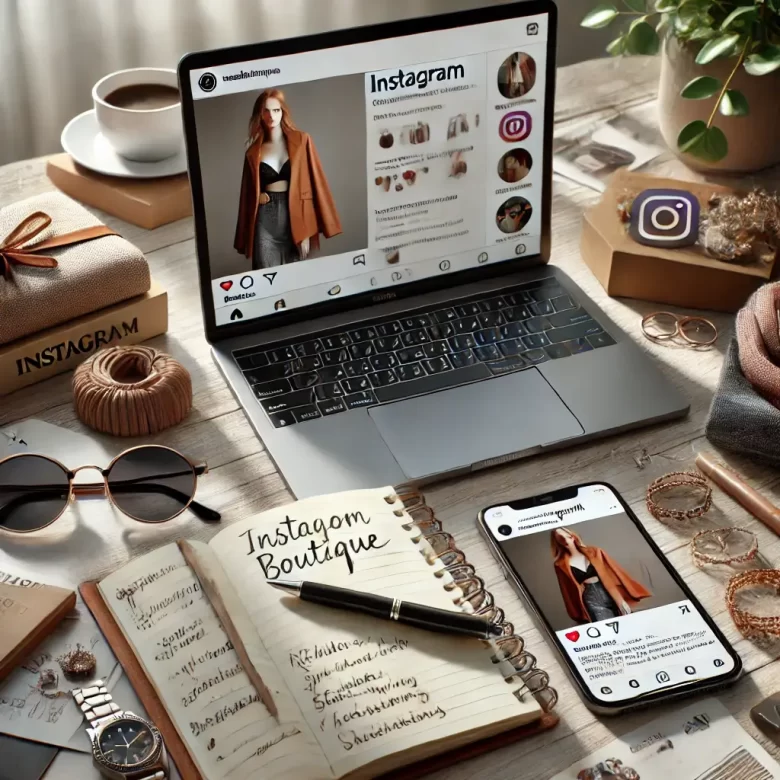In today’s digital landscape, Instagram has established itself as one of the leading platforms for brands looking to increase their online presence, particularly for fashion stores. The platform’s visual nature makes it ideal for showcasing collections, trends, and products, attracting consumers who value style and design. However, one of the biggest challenges small and medium-sized businesses face is achieving good results with paid traffic without overspending.
If you run a fashion store and want to use Instagram paid traffic, you’ve probably wondered how to optimize your limited budget to reach the right audience, generate engagement, and convert followers into customers. In this article, we’ll show you exactly how to do that.
The Power of Paid Traffic with a Limited Budget
It’s important to understand that even with a reduced budget, paid traffic campaigns can deliver impressive results when well-planned and optimized. The key lies in making smart choices and strategically leveraging the platform’s tools.
With the following tips, you’ll learn how to set clear goals, correctly target your audience, create visually appealing ads, and monitor your campaigns to ensure you’re maximizing your return on investment (ROI). Let’s get started!
What Is Paid Traffic on Instagram?
Before diving into practical tips, let’s clarify what paid traffic means in the context of Instagram. Paid traffic refers to all types of ads you pay to display on the platform, including:
- Feed Ads: Appear as regular posts in users’ feeds.
- Story Ads: Images or videos displayed between followers’ stories.
- Reels Ads: Short promotional videos inserted between organic Reels content.
- Explore Ads: Shown to users while they browse the Explore page.
These formats allow your fashion store to reach people who might not know your brand but could be interested in your products based on their interests and behavior on the platform.
The main goal of paid traffic is to drive these users toward a specific action—whether visiting your profile, going to your website, or making a direct purchase. Moreover, Instagram allows for precise ad targeting, which is essential for those working with a limited budget.
Now that you understand what paid traffic is, let’s explore the tips that will make your Instagram campaign successful, even with controlled resources.
Practical Tips to Optimize Campaigns on a Limited Budget
1. Set Clear Goals
The first step to any successful campaign is setting clear and measurable goals. This is even more critical when working with a controlled budget. Without a clear objective, it’s easy to spend money on ads that don’t deliver the expected results.
When defining your goal, think about what you want to achieve. For fashion stores, some common goals might include:
- Increasing followers: If your goal is to build a follower base, focus on ads encouraging people to follow your account for updates on new collections and promotions.
- Driving direct sales: If your focus is selling specific products, like a new summer collection, your ads should include a direct link to the product page and a clear call-to-action, such as “Shop Now.”
- Boosting website traffic: If you want to increase traffic to your e-commerce site, direct users to your store using a “Learn More” or “Visit Website” button.
Setting defined goals helps you allocate your budget toward actions that bring tangible results. Additionally, knowing what you aim to achieve makes it easier to measure campaign success and make adjustments over time.
2. Know Your Target Audience
One of Instagram’s greatest advertising benefits is its ability to target your audience precisely. To leverage this, you need to understand who your potential customers are. Consider who buys your products, their interests, and how they consume content on Instagram.
Tools like Facebook Ads Manager (which also manages Instagram ads) allow you to target your audience based on various criteria, including:
- Age and Gender: If you sell women’s clothing, for example, you can focus your ad on women within the age range that most consumes your products.
- Location: For physical stores, location targeting is crucial. If your fashion store is in São Paulo, you can target your ads to reach people living or frequenting the city.
- Interests: Instagram offers a wide range of interests to select from. For instance, you can target ads to people following fashion influencers or interested in specific clothing brands.
Understanding your audience helps avoid wasting your budget on people who aren’t interested in your product.
3. Leverage Remarketing
Remarketing is one of the most effective and economical strategies for converting visitors into customers. It allows you to show ads to people who’ve already interacted with your store—whether by visiting your Instagram profile, browsing your website, or adding items to their shopping cart but not completing a purchase.
For example, imagine a user visits your website and views a handbag but leaves without purchasing it. With remarketing, you can display personalized ads for that same handbag, encouraging them to complete the purchase. This increases the likelihood of conversion since the user has already shown interest in the product.
On Instagram, remarketing can be done using dynamic ads that showcase products previously viewed by users. Another effective tactic is offering exclusive discounts or free shipping to encourage visitors to return and complete their purchase.
4. Create Visually Engaging Ads
Instagram is a visual platform, meaning the success of your ads largely depends on the quality of your images and videos. As a fashion store, you have an advantage: clothing, accessories, and fashion, in general, are products that benefit greatly from good visual presentation.
When creating your ads, think about how to showcase your products in an appealing way. Here are some tips for creating effective visuals:
- Use high-quality photos: Avoid blurry or poorly framed images. Invest in good visuals that highlight your products’ details. If possible, use models representing your target audience to show how the clothing fits.
- Focus on short videos: Short videos (up to 30 seconds) are great for showing collections in motion. Dynamic videos presenting various outfits can capture users’ attention and increase engagement.
- Include clear calls-to-action: Regardless of the type of ad you’re creating, always include a clear CTA, such as “Shop Now,” “Learn More,” or “Take Advantage of the Discount,” to guide users to the next step.
Remember, the aesthetics of your ad should reflect your brand’s visual identity, creating a cohesive and memorable experience for consumers.
5. Use the Right Ad Formats
Instagram offers various ad formats, each of which can be strategically used depending on your campaign goals. The main formats include:
- Single Image Ads: Simple and direct, ideal for highlighting a specific product.
- Carousel Ads: Allow you to showcase multiple images or videos in one post. This format is perfect for displaying a collection of products, such as clothing and accessories.
- Video Ads: Great for storytelling or showcasing complete looks. Videos can be short (for Stories and Reels) or longer (for the feed).
- Story Ads: Excellent for driving quick engagement, as they appear between users’ stories and offer an immersive approach.
Experiment with different ad formats to see which generates the most engagement with your audience. For fashion stores, carousels can be an excellent option for showcasing various pieces from a collection in a single campaign.
6. Monitor and Adjust Your Campaigns Regularly
One of the main advantages of digital advertising, particularly on Instagram, is the ability to monitor your campaign’s performance in real-time. This allows you to make adjustments as needed, ensuring you’re getting the best return on investment.
Here are some key metrics to track:
- Cost per Click (CPC): How much are you paying, on average, for each click on your ad? This metric is essential for understanding if your ads are cost-effective.
- Click-Through Rate (CTR): The percentage of people who saw your ad and clicked on it. A low CTR may indicate your creative or audience targeting needs improvement.
- Conversions: How many sales or desired actions are being generated from your ads? If you’re getting many visits but few conversions, it might be time to review your landing page content or the products being advertised.
Adjusting based on this data is crucial to optimizing your campaigns and ensuring your budget is being well spent.
Conclusion
Paid traffic on Instagram is a powerful tool for fashion stores looking to expand their online presence and boost sales, even with a limited budget. Success lies in preparation and continuous campaign monitoring. Setting clear goals, understanding your audience, creating visually appealing ads, and adjusting strategies over time are essential steps to maximize your return on investment.
By applying the tips discussed in this article, you’ll be well-positioned to optimize your campaigns and achieve positive results without stretching your budget. No matter the size of your fashion store, Instagram offers the tools necessary to attract more customers and drive efficient sales.




